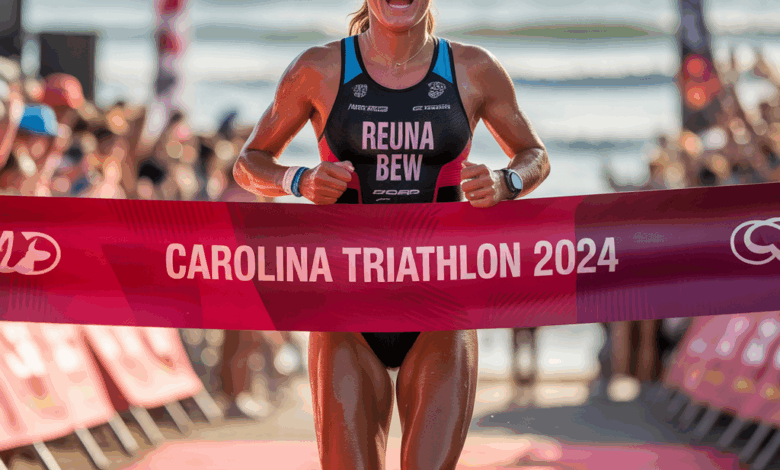Carolina Triathlon Race Experience: A Complete Guide to Race Day and Training

Have you ever stood at the water’s edge, heart racing more from excitement than nerves, wondering how the next few hours will change you? Whether you’re a first-timer chasing a bucket-list finish or a seasoned multisport athlete hunting a PR, the carolina triathlon race experience promises sweat, strategy, and an unforgettable finish-line smile.
What to expect at the carolina triathlon race experience
From the warm Atlantic breeze to the rolling bike courses and humid run splits, Carolina triathlons bring their own flavor to the sport. Expect friendly volunteers, a mix of sprint and Olympic distances, and courses that vary from flat coastal routes to challenging inland hills. Race-day logistics typically include packet pickup the day before, a mandatory pre-race briefing, marked transition areas, and on-course aid stations. Knowing what to expect removes surprises and lets you focus on pacing, transitions, and enjoying the event.
Race Day Breakdown: Swim, Bike, Run, and Transitions
Swim: Start smart
Whether it’s a wetsuit-legal ocean swim or a calm lake start, dial in a conservative opening 200–400 meters. Drafting can save energy, but don’t let crowded starts push you into an unsustainable early effort. Practice sighting and bilateral breathing to stay calm and efficient in open water.
Bike: Find your rhythm
Use the bike leg to regain composure. For a sprint tri, it’s tempting to redline, but a steady power output (or perceived effort) will make your run stronger. If the course features Carolina hills, use low cadence climbs and accelerate on the descents to maintain momentum. Remember to practice clip-in/out skills so transition times shrink naturally.
Run: Comfortable and confident
Run off the bike (the “brick” feeling) can be surprising. Start the first kilometer conservatively until your legs find their stride. Use fueling strategy and electrolytes to combat the region’s humidity; walk through aid stations if needed to sip, cool, and reset.
Training Plan and Workouts
Below is a practical training mix for busy athletes: quality sessions, recovery, and consistency. Mix volume and intensity weekly, then pick a recovery week every 3–4 weeks.
Brick Workouts (Bike + Run)
- Short brick: 30–45 min bike at moderate intensity + 15–20 min run at race pace.
- Longer brick: 60–90 min bike with tempo intervals + 30–40 min run with 3 x 5-minute race-pace efforts.
- Tip: Wear your run shoes clipped to the bike once per week to practice transition movements.
Open Water Swim Drills
- Sighting ladder: 4 x 100m, sight every 6 strokes to mimic race navigation.
- Mass-start simulation: Practice group starts in a safe, coached setting to build confidence.
- Technique: Include 50s focusing on strong catch and high elbow to improve efficiency.
Interval Bike Sessions
- VO2 efforts: 5 x 3 minutes hard with 3-minute easy recoveries to raise threshold.
- Sweet spot: 2 x 20 minutes at challenging but sustainable effort to boost endurance.
Tapering and Race Week
Two to three days of reduced volume, with one short bike-run brick 48 hours before race day, helps legs feel fresh. Prioritize sleep, hydration, and carbohydrate-rich meals the 24–48 hours before the event.
Nutrition, Hydration, and Recovery
Smart fueling wins races you can’t train your way out of. Practice nutrition in training: gels, chews, or real-food options should be tried well before race day. In humid Carolina conditions, electrolytes matter—add a sodium-containing fuel or drink to ward off cramps.
- Pre-race: 2–4 hours before, aim for a balanced meal with carbs and moderate protein (oats, toast with peanut butter, banana).
- During race: For efforts under 60 minutes, water and electrolytes may suffice; longer races need 30–60g carbs per hour depending on intensity.
- Post-race: 1:3 or 1:4 protein-to-carb ratio within 30–60 minutes to speed recovery.
Gear Checklist and Race Logistics
Essentials to pack the night before:
- Race kit (tri suit), goggles, swim cap
- Bike, helmet, shoes, spare tube/CO2
- Nutrition, race belt, sunscreen
- Transition towel, zip ties, body glide
Arrive early to racked transitions and inspect the course if possible. Familiarize yourself with aid station locations and cut-off times.
Real-World Example: From Nervous Beginner to Confident Finisher
Take Sarah, a 34-year-old teacher who trained six months for her first sprint triathlon in North Carolina. She committed to two swims, two bikes, and three run sessions weekly, emphasized brick workouts, and dialed in a simple race-day fuel plan (one gel every 30–45 minutes). On race day, conservative pacing on the bike preserved her legs and she ran a strong finishing kilometer—crossing the line with a grin and a new belief in herself. That’s the Carolina triathlon race experience in action: modest, smart preparation leads to big joy.
Frequently Asked Questions
1. What distances can I expect at Carolina triathlons?
Carolina events typically include sprint (approx. 750m swim, 20km bike, 5km run) and Olympic distances (1.5k swim, 40km bike, 10k run). Some races also offer sprint relays, super-sprint, or longer events—check your specific race’s details.
2. How should I fuel for a sprint vs. an Olympic-distance event?
For sprints (<60–90 minutes), a small carb snack pre-race and water/electrolyte on course often suffice. For Olympic distances and longer, practice consuming 30–60g of carbs per hour via gels, chews, or sports drink to maintain energy.
3. How do I overcome open water anxiety?
Practice gradual exposure: swim with a partner, join local open-water clinics, and rehearse sighting and group starts. Consider wetsuit practice and breathing drills to build confidence before race day.
Conclusion: Ready for your carolina triathlon race experience?
Whether you’re chasing a first finish or a faster split, the carolina triathlon race experience is a blend of smart training, tactical race-day decisions, and a supportive community. Start with a realistic training plan, add consistent brick sessions, practice race nutrition, and prioritize recovery. If you want structured workouts, check our workout routines, refine your fueling with our nutrition guides, and use our wellness tips to recover smarter. Lace up, train with purpose, and I’ll see you at the start line—ready to make your race day one to remember.





